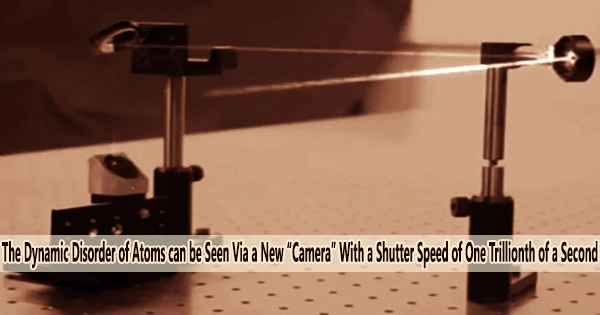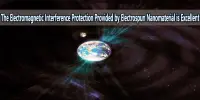A novel “camera” that can detect local disorder in materials has been created by researchers. Its distinguishing characteristic is a variable shutter speed: because the disordered atomic clusters are moving, the dynamic disorder was veiled when the team used a slow shutter, but was visible when they used a quick shutter. A trillion times faster than a typical camera shutter, the technology employs neutrons to measure the positions of individual atoms.
The greatest materials for sustainable energy applications, like turning sunlight or waste heat into electricity, frequently involve collective oscillations of clusters of atoms inside a much broader structure, according to researchers. This process is often referred to as “dynamic disorder.”
Dynamic disorder
Understanding dynamic disorder in materials may help create thermoelectric devices like solid-state refrigerators and heat pumps that are more energy-efficient as well as improve the direct conversion of waste heat from power plants’ and automobiles’ exhausts into useful energy.
A thermoelectric device was able to take heat from radioactive plutonium and convert it to electricity to power the Mars Rover when there was not enough sunlight.
Materials that work inside an operational device may act as though they were alive, responding and changing in amazing and unexpected ways. Because the clusters are so small, disorganized, and fluctuate in time, this dynamic condition is challenging to examine.
In addition, there is “boring” non-fluctuating disorder in materials that researchers aren’t interested in because the disorder doesn’t improve properties. It has hitherto been hard to distinguish the pertinent dynamic disorder from the background of the less pertinent static disorder.
New “camera” has incredibly fast shutter speed of around 1 picosecond
Researchers at Columbia Engineering and Université de Bourgogne report that they have developed a new kind of “camera” that can see the local disorder. Its distinguishing characteristic is a variable shutter speed: because the disordered atomic clusters are moving, the dynamic disorder was veiled when the team used a slow shutter, but was visible when they used a quick shutter.
The new method, which they call variable shutter PDF or vsPDF (for atomic pair distribution function), doesn’t work like a conventional camera it uses neutrons from a source at the U.S. Department of Energy’sOak Ridge National Laboratory (ORNL) to measure atomic positions with a shutter speed of around one picosecond, or a million million (a trillion) times faster than normal camera shutters. Nature Materials published the study February 20, 2023.
“It’s only with this new vsPDF tool that we can really see this side of materials,” said Simon Billinge, professor of materials science and applied physics and applied mathematics. “It gives us a whole new way to untangle the complexities of what is going on in complex materials, hidden effects that can supercharge their properties. With this technique, we’ll be able to watch a material and see which atoms are in the dance and which are sitting it out.”
New theory on stabilizing local fluctuations and converting waste heat to electricity
The vsPDF tool enabled the researchers to find atomic symmetries being broken in GeTe, an important material for thermoelectricity that converts waste heat to electricity (or electricity into cooling). They hadn’t previously been able to see the displacements, or to show the dynamic fluctuations and how quickly they fluctuated.
As a result of the insights from vsPDF, the team developed a new theory that shows just how such local fluctuations can form in GeTe and related materials. Researchers will be able to find new materials with these properties and apply outside factors to affect the result, creating even better materials, with the aid of such a mechanistic understanding of the dance.
Research team
Billlinge’s co-lead on this work with Simon Kimber, who was at the University of Bourgogne in France at the time of the study. Billinge and Kimber worked with colleagues at ORNL and the Argonne National Laboratory (ANL), also funded by the DOE. The Inelastic neutron scattering measurements for the vsPDF camera were made at ORNL; the theory was done at ANL.
Next steps
Billinge is currently striving to simplify his method for usage by the research community and expand its use to other dynamically disordered systems. The method is not yet fully automated, but with more work, it should become a measurement that is much more common and can be applied to many different material systems where atomic dynamics are significant, such as watching lithium move within battery electrodes or researching dynamic processes during water splitting with sunlight.
















